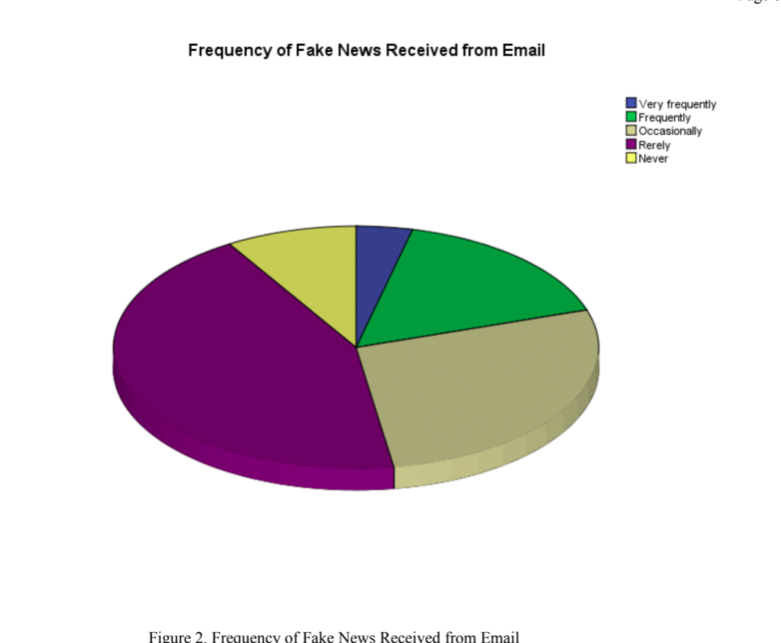

A recent surge of fake news brings many concerns. Fake news has a negative impact not only on politics but also onindividuals' everyday life. This study investigates how students from a local university encounter and respond to fake news, and if the responses are different between those students who took an information and media literacy course and those who did not. Survey method is applied in data collection.
The results show nearly 90% of the students encountered fake news via social media from occasionally to very frequently,compared to those 48% via email. When asked if they ever received news turned out to be fake, 32.5% of the participants expressed frequently (including very frequently) receiving of fake news in Table 1. 54% frequently (including very frequently) from social media in Table 2 and Figure 1, and 20% frequently (including very frequently) fromemail in Table 3 and Figure 2.
80% of them wereaware of fake news with varying degrees, with majority of the participants indicated probing and preventing further sharing of fake news by taking various actions. However, 22.5% of the students indicated they shared news stories that turned out to be untrue because it was very informative, and 12.5% made up and shared news stories for entertainment and humor, in Table 4. The results show little differences between having and not having Information Literacy training experience,in students’ responses to fake news.
Relevance of Findings
News literacy and critical thinking skills are part of information and media literacy. This study will inform national educational policy for teaching media and informationliteracy skills.





